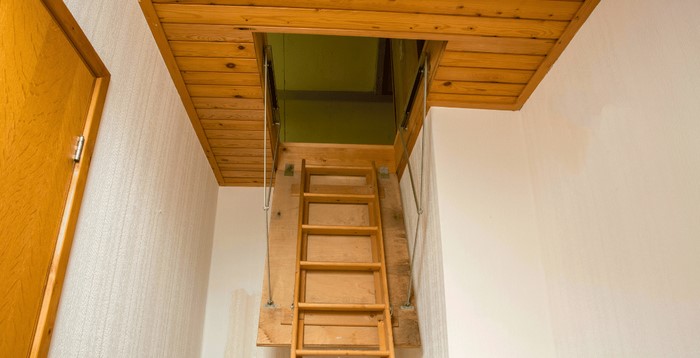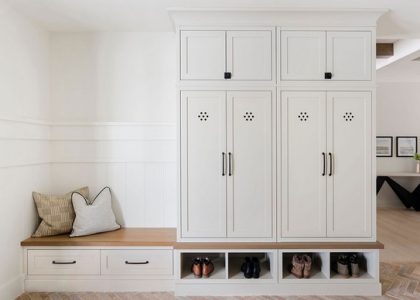
When it comes to improving home energy efficiency, many homeowners focus on insulation in walls, attics, and floors. However, one often overlooked area is the attic access door. If you have an attic in your home, the access door can be a significant source of heat loss in winter and cool air loss in summer. Insulated attic access doors are an effective solution to this problem, helping to maintain a comfortable temperature inside your home while reducing energy costs. In this article, we will explore the benefits of insulated attic access doors, how they contribute to home efficiency, and why upgrading this feature should be a priority for any homeowner looking to enhance their home’s energy performance.
Why Insulated Attic Access Doors Matter
Attic access doors are typically located in hallways, closets, or even in the garage. While these doors may seem like a small component of your home, they can have a major impact on your home’s overall energy efficiency. A poorly insulated attic access door can allow air to escape, contributing to higher heating and cooling costs, especially in regions with extreme weather conditions.
Insulated attic access doors provide a barrier that keeps hot or cold air from escaping into the attic space, reducing the amount of energy needed to maintain comfortable temperatures. In homes with uninsulated or inadequately sealed attic doors, warm air can escape during the winter, making it harder to maintain indoor temperatures. In the summer, the attic can become extremely hot, leading to heat infiltration into your living spaces. Both of these scenarios increase the workload on your HVAC system, ultimately raising your energy bills.
Key Benefits of Insulated Attic Access Doors
There are several advantages to upgrading your attic access door with an insulated model. These doors provide significant long-term benefits for both comfort and energy savings.
1. Improved Energy Efficiency
The primary benefit of insulated attic access doors is the improved energy efficiency they bring to your home. By sealing off the attic more effectively, these doors prevent air leaks that can lead to temperature fluctuations in your living spaces. In winter, the door helps keep warm air inside, reducing the load on your heating system. In summer, it helps prevent the hot attic air from seeping into your home, thus reducing the demand on your air conditioning system.
These efficiency improvements can result in lower monthly utility bills and a more consistent indoor temperature throughout the year. In fact, homes with well-insulated attic access doors can see a reduction in heating and cooling costs by up to 20%.
2. Enhanced Comfort
An insulated attic access door helps maintain a more stable temperature inside your home. This is particularly beneficial for rooms near the attic, which can become uncomfortably warm or cold without proper insulation. By reducing temperature fluctuations, an insulated attic access door can make your entire home feel more comfortable and pleasant to live in.
In addition, homes with insulated attic doors experience fewer drafts, which are a common issue in homes with unsealed or poorly insulated attic access points. This leads to a more even distribution of air, further enhancing indoor comfort.
3. Extended Lifespan of HVAC Systems
When your HVAC system is constantly working to overcome temperature fluctuations and air leaks, it undergoes additional strain, which can lead to faster wear and tear. Over time, this can result in higher maintenance costs and a shorter lifespan for your heating and cooling equipment. By installing insulated attic access doors, you can alleviate some of the burden on your HVAC system, extending its lifespan and improving its overall efficiency.
Additionally, the reduction in energy consumption can lessen the demand on your system, which can have a positive environmental impact. By using less energy, your home contributes to reducing the carbon footprint, promoting a more sustainable and eco-friendly lifestyle.
4. Noise Reduction
Another benefit of insulated attic access doors is noise reduction. Homes with poorly insulated attic doors can experience unwanted noise transfer between the attic and living spaces. This can be particularly noticeable during high winds, storms, or even when there are activities in the attic such as footsteps or movements.
An insulated access door helps buffer sound, keeping external noises or attic sounds from entering your living areas. This can create a quieter, more peaceful environment, enhancing the overall quality of life in your home.
5. Improved Home Value
Increased energy efficiency is a significant factor for homebuyers. As more people become conscious of their energy use and its impact on both the environment and their wallets, homes with upgraded, energy-efficient features—such as insulated attic access doors—become more appealing on the market.
If you’re planning to sell your home in the future, an insulated attic access door can increase your home’s market value and set it apart from other properties that may not have this energy-efficient upgrade.
How to Choose the Right Insulated Attic Access Door
When selecting an insulated attic access door for your home, there are several factors to consider. Choosing the right product will ensure that you reap all the benefits of improved energy efficiency, comfort, and durability.
1. Material
The material of the door plays a significant role in its insulation properties. Common materials for insulated attic access doors include:
- Polystyrene: This is a commonly used insulation material known for its good thermal resistance. Polystyrene is often used in pre-made attic access doors because it offers solid insulation at a relatively low cost.
- Polyurethane: This material has higher insulation properties than polystyrene and is typically found in higher-end attic access doors. It provides superior energy efficiency and can be a great option for homes in colder climates.
- Fiberglass: Some attic access doors use fiberglass insulation, which is durable and has excellent soundproofing qualities.
2. Air Sealing
Look for doors that provide effective air sealing to prevent any air leakage. Even if a door is insulated, if it doesn’t form a good seal around the edges, air can still escape, reducing the effectiveness of the insulation. Choose a door with a high-quality weatherstripping seal to ensure optimal air-tightness.
3. Durability and Security
Since attic access doors are often located in high-traffic areas, it’s essential to choose a model that is durable and can withstand regular use. Look for doors with sturdy frames and materials that can handle the wear and tear of daily life. Additionally, some insulated attic access doors come with added security features such as lockable mechanisms to prevent unauthorized access to your attic.
4. Size and Fit
Ensure the door fits properly in the space where it will be installed. An ill-fitting attic access door can leave gaps that compromise the efficiency of the insulation. Most manufacturers offer custom sizing options, so it’s worth getting a professional measurement to ensure the best fit for your home.
Upgrading to insulated attic access doors is a smart and cost-effective way to improve your home’s energy efficiency, comfort, and overall performance. These doors help maintain a stable temperature throughout your home, reduce energy costs, extend the lifespan of your HVAC system, and even increase your home’s market value. Whether you’re looking to conserve energy, enhance your living space’s comfort, or make your home more eco-friendly, investing in insulated attic access doors is an excellent choice. Make the switch today, and enjoy the benefits of a more energy-efficient home that’s both comfortable and sustainable for years to come.



